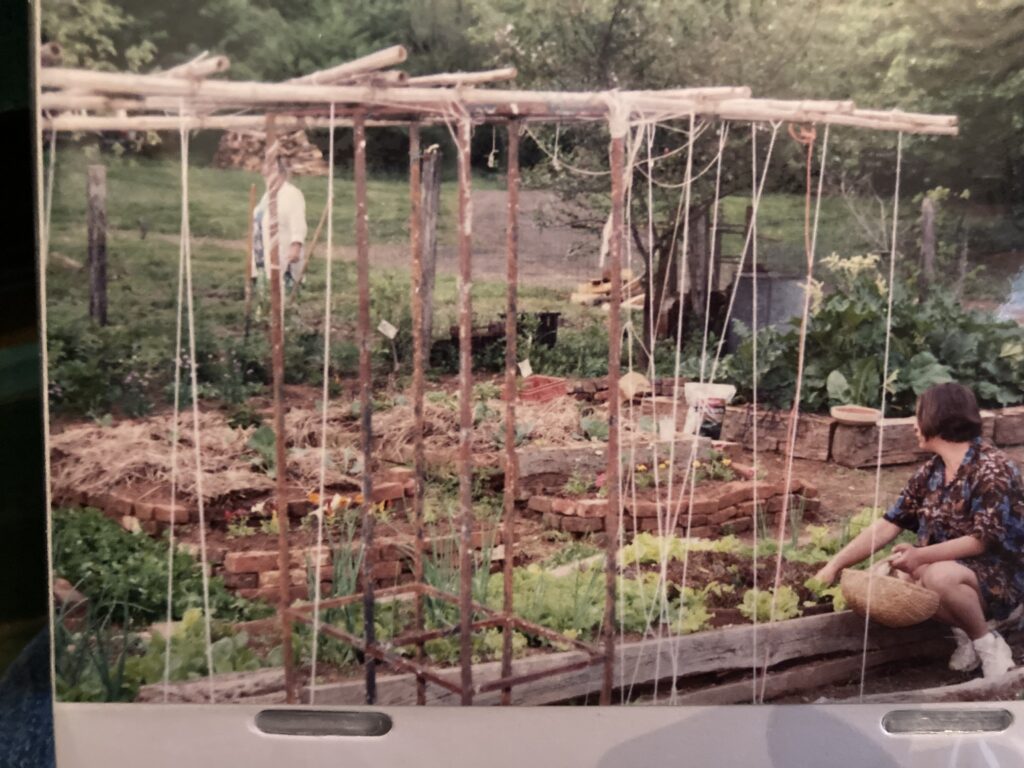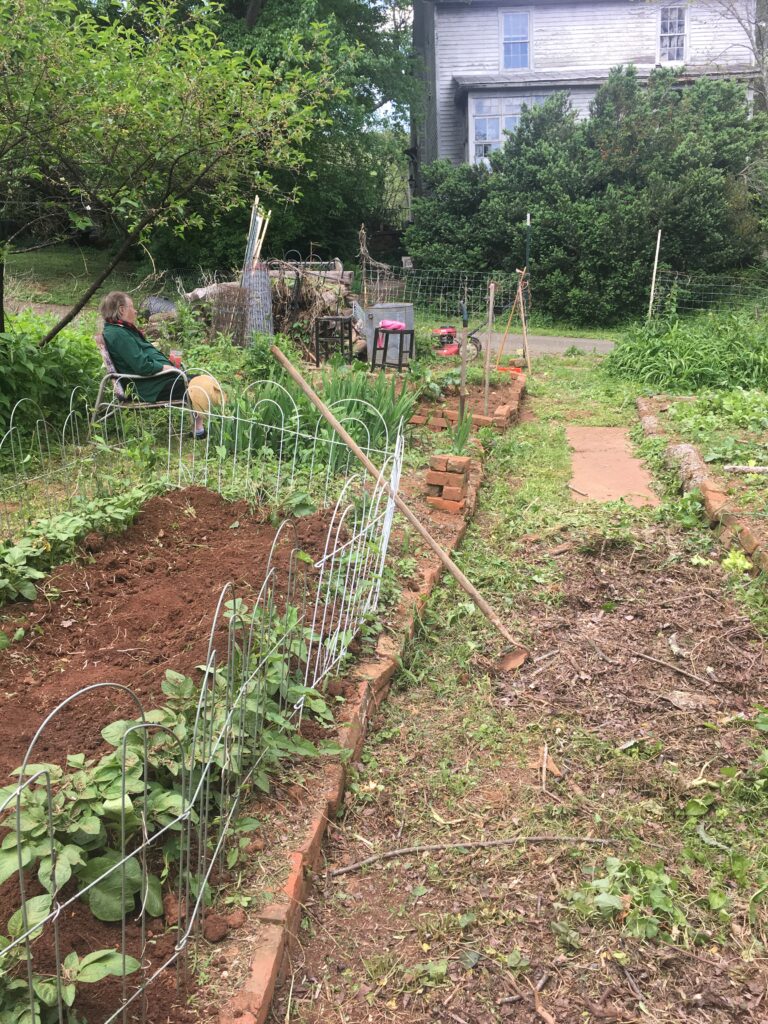Give in magnitudes of collards for our weekly food distribution: 1 case = $30, a month of collards = $180 Venmo @dollyjoseph To give with PayPal, check or for a tax deduction please contact me.
I’ve been doing a complete rehaul of my vegetable garden. In all of my years, I can’t remember a year that I haven’t planted something. I am so lucky to have a plot of land that I know so well. Gardening has been a huge connector for me– with birth family, chosen family, community, immigrant families with their own farming cultures, and the shuttle driver earlier this month at Settle Tire.
The big house at our family property is a central staging area for the goods from here– eggs and produce from the garden– and from afar– quantities of venison from my sister that she carefully puts up from the Martha’s Vineyard hunting season. — fish that she cleans, smokes, and freezes. — about-to-expire food stuffs from pantries. –bushels of mostly usable food discarded by grocery stores. –aspirational dried beans that no one got around to cooking yet. –gleaning from various farms, including Bellair Farm CSA.
Some of this food goes to our regular Ridge St or North Garden regular distributions, but some just isn’t appropriate to go there for a wide variety of reasons. It’s unacceptable to me to have usable food go to waste. Mom was a child during the Depression. She told of the silence of the Tennessee mountains due to people killing the birds in order to have food to eat. I remember my own times in childhood where it seemed there was nothing to eat. My resourceful and imaginative mother created memorable meals of chef salads and a “girl scout” rice and hamburger one-pot dish out of what seemed to be bare refrigerator shelves.
It’s been 30 years since I cooked my first entire Thanksgiving meal for our large family (I was 18, and it was delicious). I’ve been in the service industry for almost 3 decades, and have learned a great deal about food safety, preparation, and storage. An unseen part of my community food work is the many ways that I share my prepared food and knowledge with my people. Everybody eats. Food is love. I love sending a young mom home with a bushel of a combo of soups, venison, fish, and veggies ready to get turned into meals. I love to have a parade of friends come through and “shop” cast offs. I love when in return I get the cake or stew that some random fruit or vegetable has become.
All of this is within the context of uncertainty and struggle. It’s the 3 year anniversary of the declaration of the global pandemic. My response to COVID-19 was to focus on food, because I understand it. I remember my own fears about how I would access food– how I would be able to afford or find it– would we even have enough as our supply chains, farms and processors got shut down. While there was suffering, it was lessened by both community and governmental response. This month, the emergency food assistance supplement to SNAP will be ending. This means that households will lose $95-$250 per month in food stamps. This is in addition to the rising food costs that we have all seen at the grocery store. We do not ask about the income of any of our participating community members, but I am sure that many receive SNAP benefits and will be losing this supplement. While many of us on this email list might have to tighten belts figuratively, we enjoy relative stability– we own our homes, have access to generational wealth, and/or have professional class jobs with health insurance and paid leave. Many of our neighbors have less or no access to these privileges. This is not the only way to support community– there are many ways, and as always, if you can, we appreciate your support of our weekly food distribution, but understand if you cannot.


